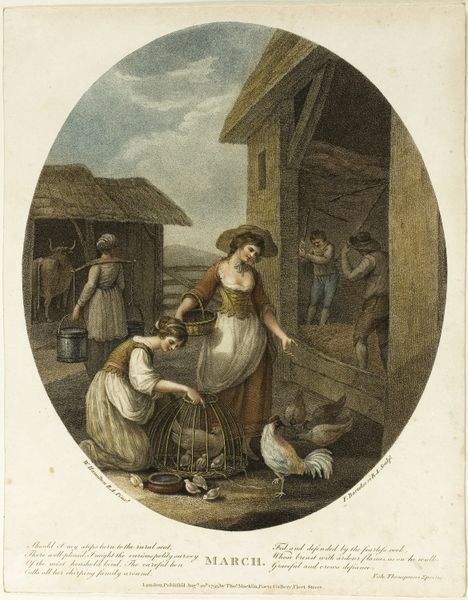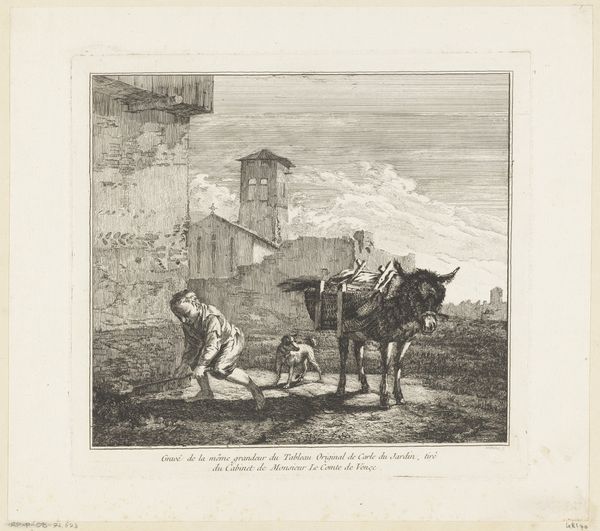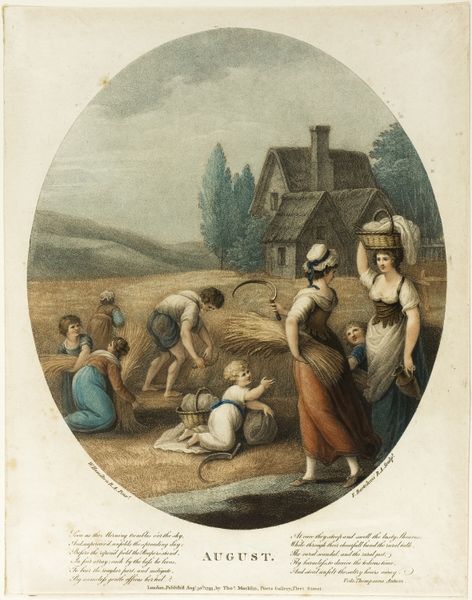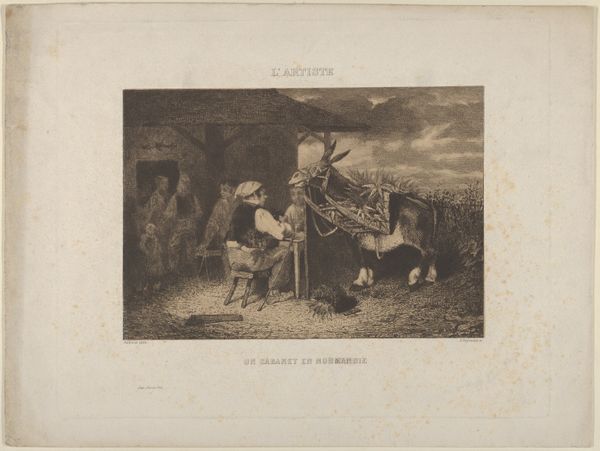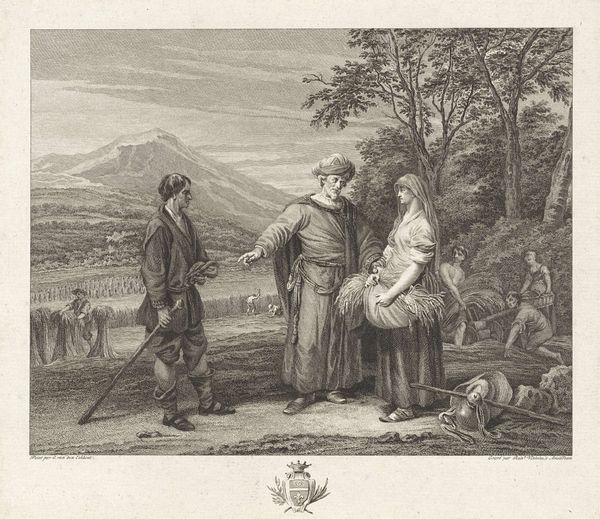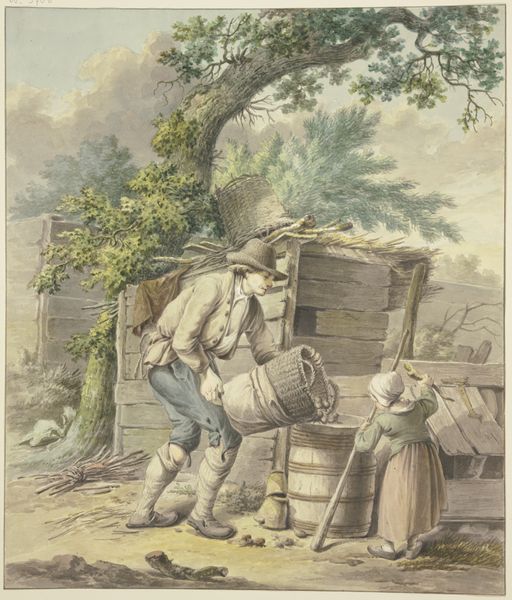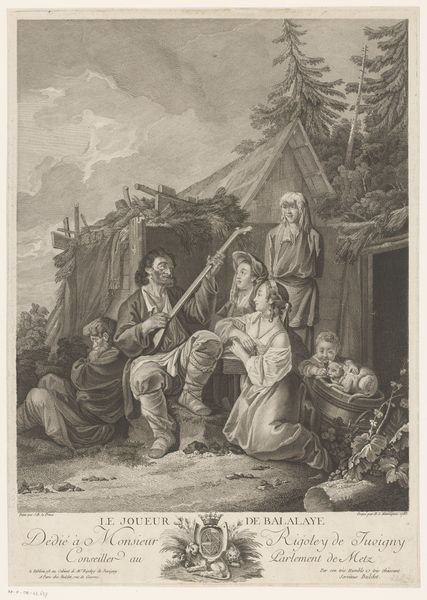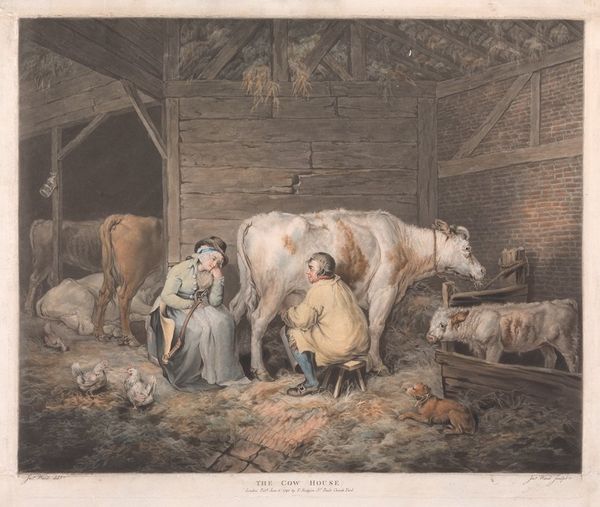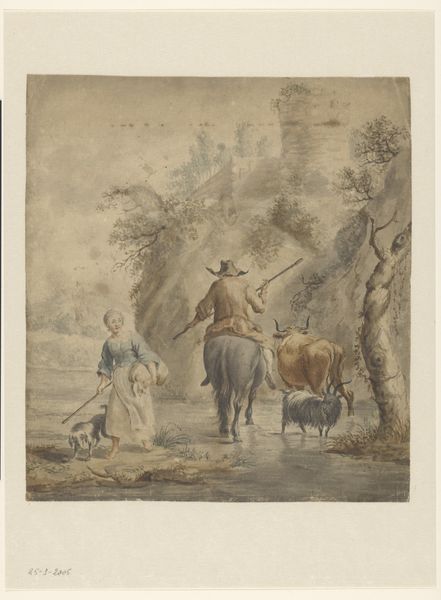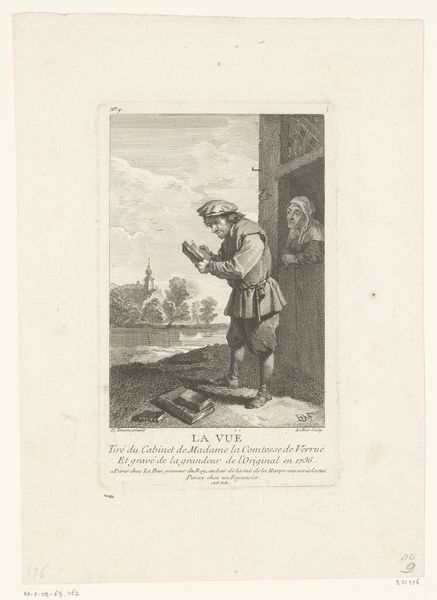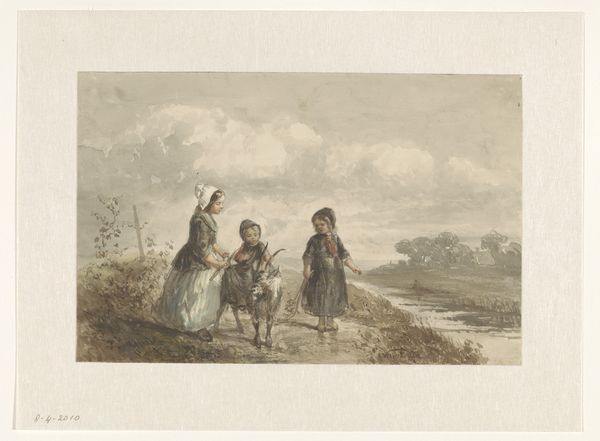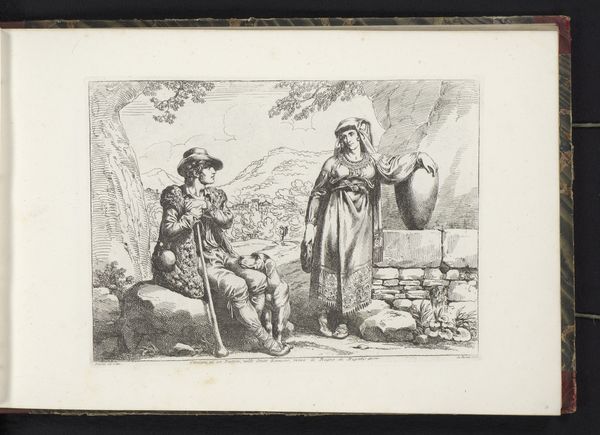
drawing, print, paper, engraving
#
drawing
# print
#
paper
#
romanticism
#
genre-painting
#
history-painting
#
engraving
#
watercolor
Dimensions: 307 × 253 mm (image); 363 × 281 mm (sheet)
Copyright: Public Domain
Curator: Francesco Bartolozzi's "February," created in 1793, captures a moment in rural life, rendered through engraving and watercolor on paper. It's currently part of the Art Institute of Chicago's collection. Editor: Immediately, I’m struck by its dreamlike quality. The muted colors, soft lines—it’s like peering into a nostalgic memory. There's a real serenity despite the suggestion of labor. Curator: The scene speaks to Romantic ideals. These weren't just simple pastoral images, but complex representations of social order, idealized peasantry, and the relationship between humanity and nature. Editor: True. You can definitely read it through that lens. The central figures, a woman handing something to a man draped in what looks like a shroud, have an interesting ambiguity. She could represent provision or support for male labor and by extension the land that bore the wealth for the elite classes that she indirectly labors under, who benefit most of all. Or both. Curator: Bartolozzi was a master engraver; the fine detail and delicate coloring evoke a specific kind of sentiment. The background elements—the plough, figures in the field, hint to a castle on a faraway hill—tell a story about life during a certain period. Editor: But also reinforce a societal hierachy and the accepted place of each individual with the "divine order." It speaks, too, about land enclosure and wealth distribution, right? Who benefited from all this toiling soil, which looks very cold I might add? It all begs to be questioned from where those pretty aesthetics stem from. Curator: You bring a valid perspective. These scenes of rustic harmony did sometimes mask social and economic inequalities, but they can also celebrate nature and the simplicity of country existence as alternatives to urban chaos. And perhaps just maybe they are not really connected to anything at all and have absolutely no more intentions than capturing what Bartolozzi understood life at the moment? Editor: It's the tension between idealized vision and the realities it might obscure that makes "February" so compelling and that also keeps me so incredibly suspicious. Ultimately, there's far more that an artwork of any sort has to convey to audiences given both space and time for viewers, like ourselves.
Comments
No comments
Be the first to comment and join the conversation on the ultimate creative platform.
